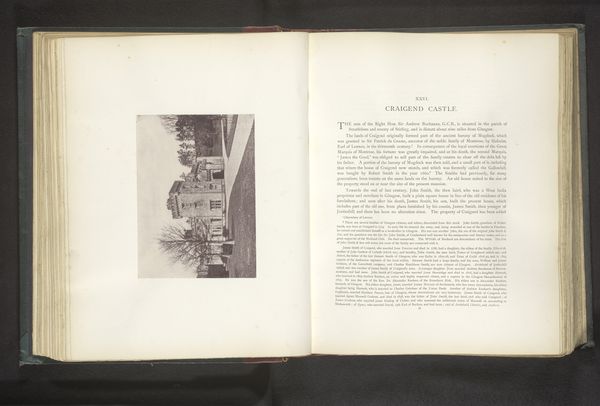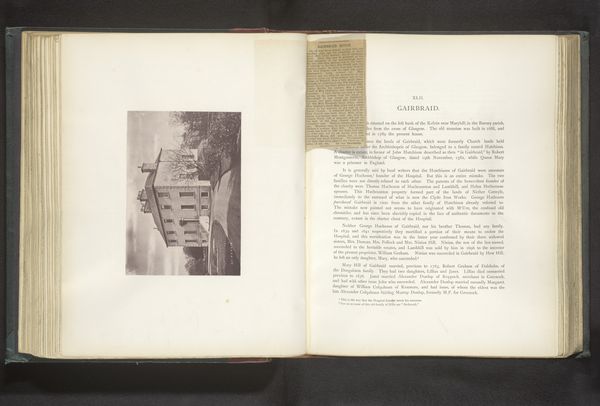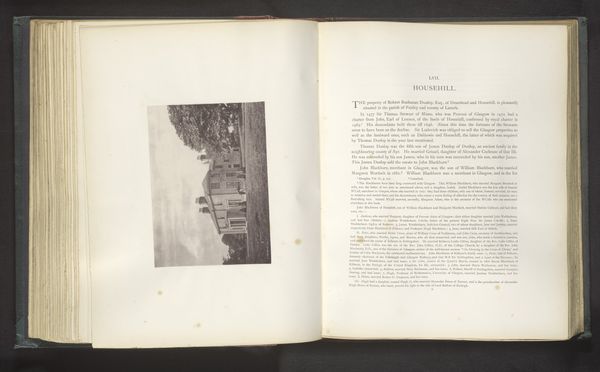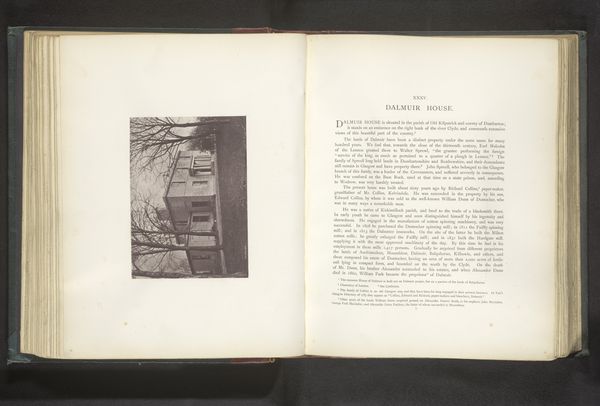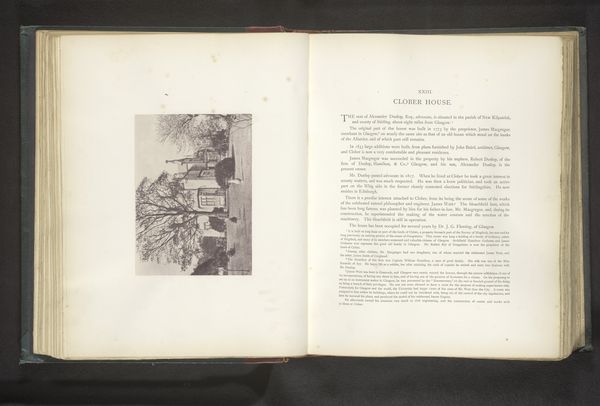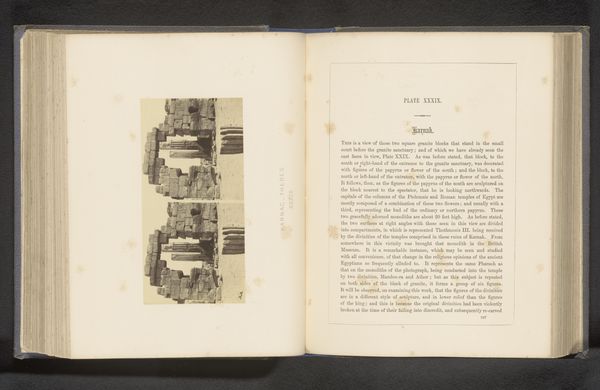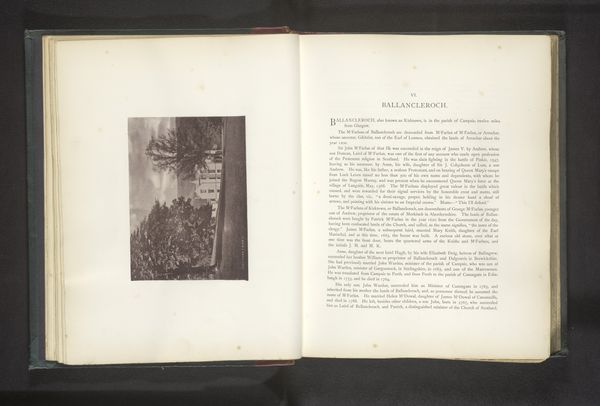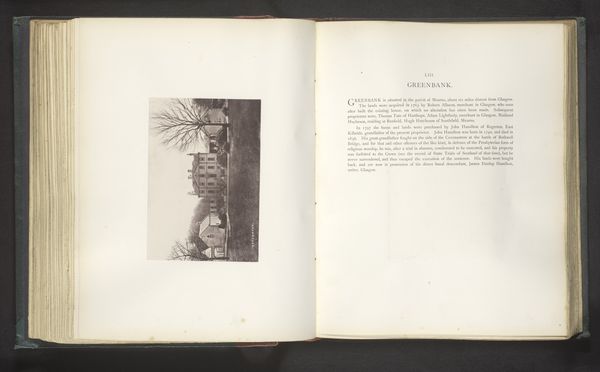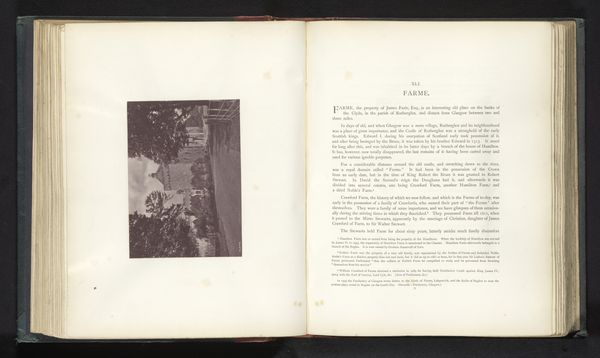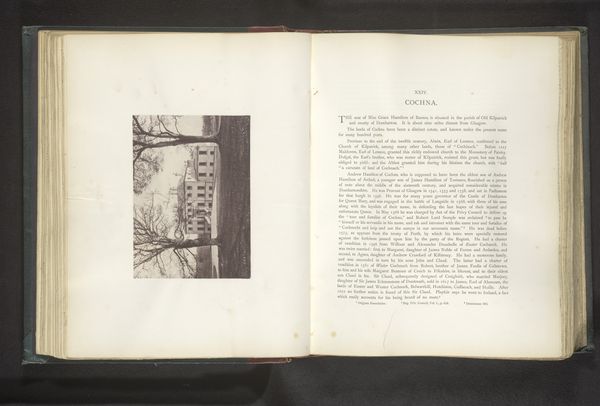
print, photography
# print
#
photography
#
cityscape
#
building
Dimensions: height 115 mm, width 160 mm
Copyright: Rijks Museum: Open Domain
Curator: Here we see "Easterhill", a photographic print produced before 1878 by Thomas Annan. It's a stately building amidst what seems like rather stark surroundings. What strikes you initially about this piece? Editor: A little bleak, honestly! The skeletal tree in the foreground practically claws at the building, like nature's reclaiming it. It’s a very formal, rigid structure, which just seems out of sync with the wilder aspects surrounding it. I wonder about the people inside... are they as buttoned-up as the architecture suggests? Curator: The architectural forms certainly lend themselves to a particular reading. The composition directs our gaze upward, emphasizing the geometric relationships of the windows and roofline. Notice how Annan uses light and shadow to articulate the facade, creating a play of textures that suggests both solidity and depth. There is almost a tension between nature and architecture, which mirrors the dialogue between light and shadow that enlivens the whole image. Editor: You know, that push and pull makes it more interesting. At first glance, the somber tones put me off, but the building itself has a compelling rhythm. Those rectangular shapes of the windows create a steady, almost musical beat. It gives the eye somewhere to dance despite the general austerity. Almost hopeful? Or am I imagining it? Curator: Perhaps you're sensing the aspirations of the builders. Annan often documented the changing urban landscape, reflecting on progress and permanence. Considering the time, his documentation takes on the character of preservation; these buildings represent a moment in history, both materially and ideologically. Editor: So, it’s less a simple snapshot and more like a statement? Looking at it that way… it gives me pause. Makes me think of how places carry the weight of stories and ambitions. All wrapped up in stone, glass, and… stark photographic chemicals! It’s quite something. Curator: Indeed. The formal elements and tonal range guide our interpretation but understanding the socio-historical context expands it. We are left to reflect on what the architecture itself projects, or better, projects itself to be through our intervention. Editor: And thanks to Annan, we get to stand here, more than a century later, peering in. Food for thought and imagination for sure!
Comments
No comments
Be the first to comment and join the conversation on the ultimate creative platform.
